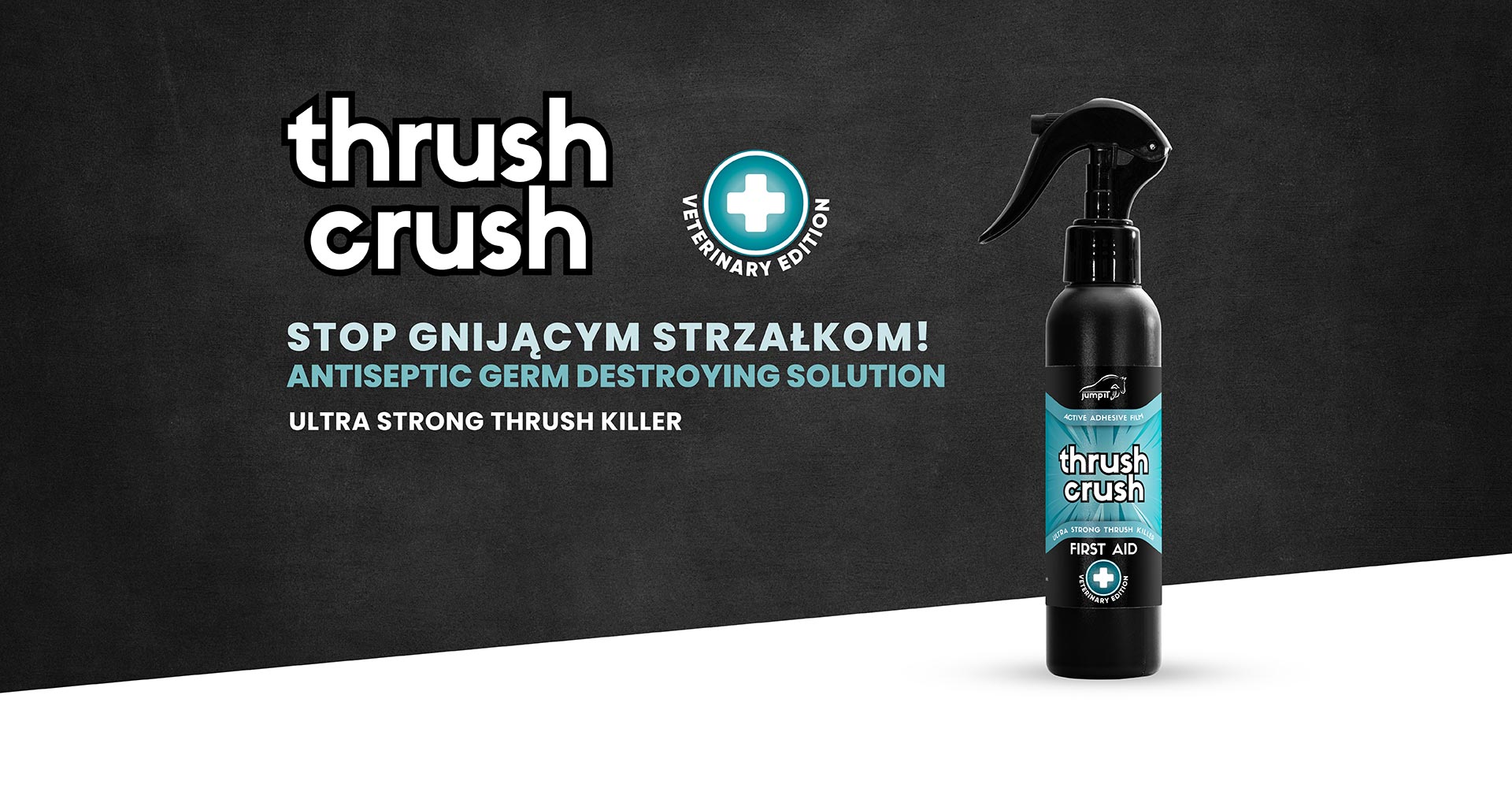
thrush crush has been designed to provide a full spectrum of protection against microorganisms, especially targeting anaerobic gram-negative putrefactive bacteria of the genus Fusobacterium, which are the most common cause of thrush in horses. The active ingredients used have been selected in terms of the mechanism of their action on microorganisms, in appropriate concentrations, so that they complement each other and ensure 100% effectiveness in the fight against thrush and support the regeneration and healing of damaged hoof tissues.
 |
This product DOES NOT CONTAIN FEI (Fédération Equestre Internationale) approved substances for doping substances indicated in the 'Equine Prohibited Substances List' (EPSL). |
THE BASE THAT WILL ENSURE THRUSH CRUSH STAYS WHERE IT SHOULD BE AND WILL BE EFFECTIVE IS:
THE POWER OF COMBINED ACTIVE INGREDIENTS:
TEA TREE OIL
It is known primarily for its excellent antiseptic properties. The phenolic compounds and terpenes of tea tree oil have an antimicrobial effect against bacteria (including some antibiotic-resistant ones), fungi and viruses. The mechanism of the antibacterial and antifungal action is based on the destabilization and destruction of the cell membrane, as well as the ability to inhibit the synthesis of nucleic acids and some microbial proteins. In addition to the antiseptic effect, tea tree oil also has strong anti-inflammatory properties and accelerates the healing of wounds caused by the development of pathogens.
THYMOL
Thymol is a valuable organic compound found naturally in many essential oils. Like tea tree oil, it has antiseptic properties through the mechanism of damaging the cell membrane and lysing the cells of pathogens. In addition, thymol has the ability to inhibit enzymes from the dehydrogenase group (necessary for cellular respiration), reduce the level of ATP and inhibit the production of biofilm by pathogens, thus preventing their activity.
PERUVIAN BALM
An indispensable substance with great potential in the treatment of skin diseases. Its antibacterial and anti-inflammatory properties are appreciated due to the significant effectiveness of decontamination combined with the simultaneous regeneration of damaged tissues. Peruvian balm, by stimulating blood microcirculation, affects the natural processes of skin renewal by increasing the production of collagen and elastin.
LAVENDER OIL
Lavender oil, rich in anthocyanins, tannins and essential oil components, exhibits a broad spectrum of antibacterial and antifungal properties. It protects damaged skin against infections and harmful external factors, also lavender oil accelerates the healing of wounds, burns and insect bites. The ability of lavender oil to stimulate cell division and thus regeneration has also been demonstrated in scientific studies.
DIDECYL DIMETHYL AMMONIUM CHLORIDE
It belongs to quaternary ammonium compounds and is an antiseptic and disinfecting agent. It disrupts intermolecular interactions and dissociates lipid bilayers in the cell membrane, leading to its breakdown,thus making it an excellent disinfectant.
PHENOXYETHANOL
Phenoxyethanol is an organic chemical compound belonging to the group of ethers; is a phenyl derivative of ethylene glycol. It has a wide spectrum of antimicrobial and bactericidal activity - it is effective against various pathogenic gram-negative and gram-positive bacteria, as well as against yeasts, while its influence on the positive microflora is very weak, which makes it safe to use. The antimicrobial mechanism of action of phenoxyethanol is based on increasing the permeability of the cell membrane to potassium ions.
EFFECTIVENESS AND SAFETY CONFIRMED BY TESTS
In the effective treatment of thrush, the most important thing is that the product remains on the surface of the infected hoof and that the product is in constant contact with the affected areas. thrush crush as a product with strong adhesive properties was subjected to the peel adhesion test. This method consisted in applying the preparation to a special disk, and then pressing it with a certain force to the porous model surface and tearing it off. As a control parameter, the amount of preparation remaining on the disc was measured.
thrush crush from the beginning of therapy releases the active substances contained in it, which act immediately to eliminate the cause of thrush - bacteria of the genus Fusobacterium. This ability was confirmed in an efficacy study against gram-negative bacteria (Escherichia coli family). The determination was made using the disc diffusion method.








 www.facebook.com/jumpitpl
www.facebook.com/jumpitpl
 instagram.com/jumpit_together
instagram.com/jumpit_together